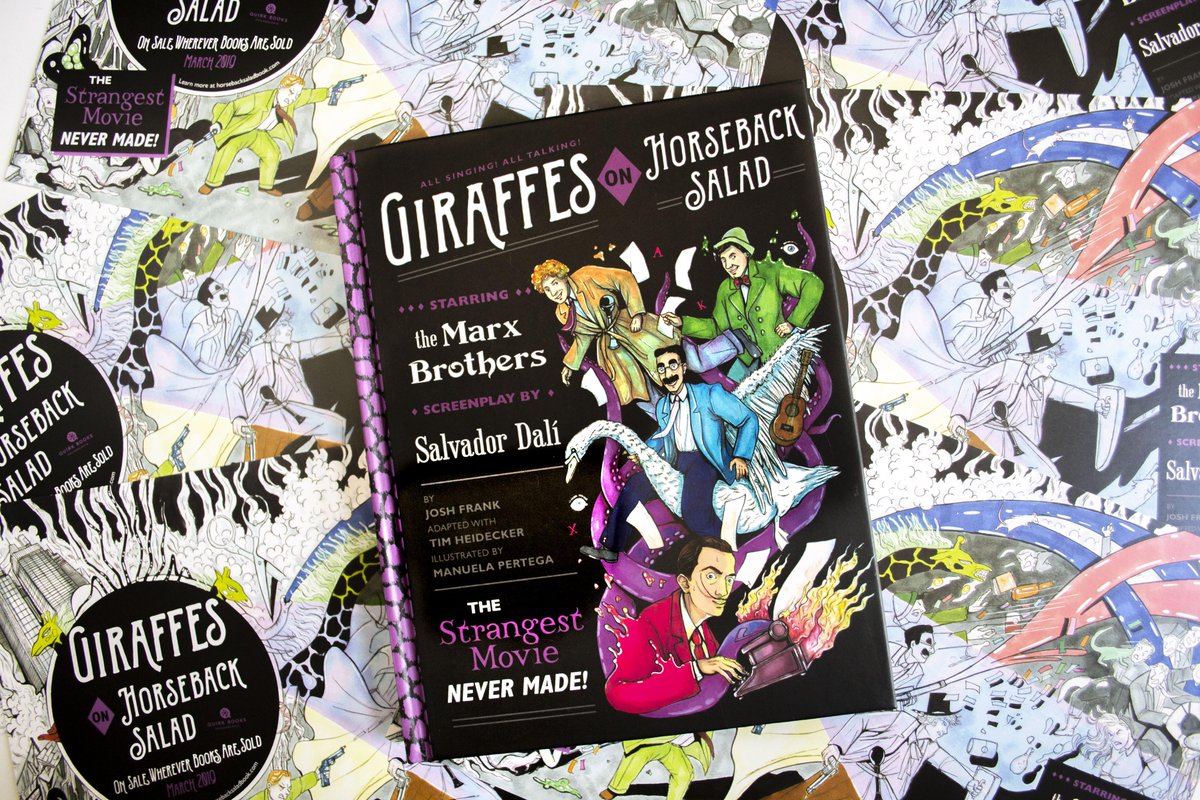Try to picture the words in this book’s title: “Giraffes on Horseback Salad.” Can you picture it? A giraffe astride a horse; two legs on one side of the horse’s midsection, two legs on the other side. Imagine this image replicated many times, and the horses and their giraffe riders all tossed into a salad. Do you think the idea is fantastic? Surrealistic?
If so, then the two unlikely creative partners who conceptualized the idea – the artist Salvador Dali and the normally voiceless actor/comedian/musician Harpo Marx succeeded in sparking your interest in a film they proposed in which Harpo—in the guise of the talking millionaire boy wonder, “Jimmy,” is enticed to leave the world of realism by the very beautiful and mysterious Surreal Woman. She has an incredible super power: anything that she imagines comes to being, and her imagination is like those of the Marx Brothers, who co-star. From her head comes zany chaos.
Before “Jimmy” met “Surreal Woman,” he had a glamorous, though shallow, girlfriend, who becomes enraged by the fact that she no longer is the center of attention. In some scenes, “Jimmy” plays the harp, whereupon he is transformed into the Harpo persona loved by Marx Brothers movie fans.
Dali met Harpo during a trip to the United States in the late 1930s, and became so enchanted with their mutual out-of-this world senses of humor that he sent to the movie star a harp that was strung with barbed wire. He also was motivated to write a screenplay in which Harpo would star. Trouble was, the movie moguls didn’t think the oddball plot would do well at the box office, notwithstanding that it was leavened with Marx Brothers word and sight gags that had proved so popular in other efforts. Even Groucho, who would have had a major speaking role in the movie, dismissed it, saying that it wouldn’t play.
Eventually, the script was put away, and was all but forgotten, except in some Hollywood history footnotes. Josh Frank, who had been a fan since he was 10 years old of old Marx Brothers movies, was able to chase down Dali’s rough script ideas. Collaborating with Tim Heideker, and illustrator Maneula Pertega, they drew in graphic novel format the bizarre story that movie makers never ventured to make.
The graphic novel is a fun read in its own right, and the well-told story behind the story makes it an interesting part of Hollywood’s history.
Republished from San Diego Jewish World


























